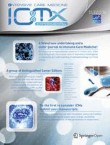Adrecizumab, a non-neutralizing anti-adrenomedullin antibody, improves haemodynamics and attenuates myocardial oxidative stress in septic rats
Sepsis still represents a major health issue, with persistent high morbidity and mortality rates. Cardiovascular dysfunction occurs frequently during sepsis. Adrenomedullin has been identified as a key mediato...
